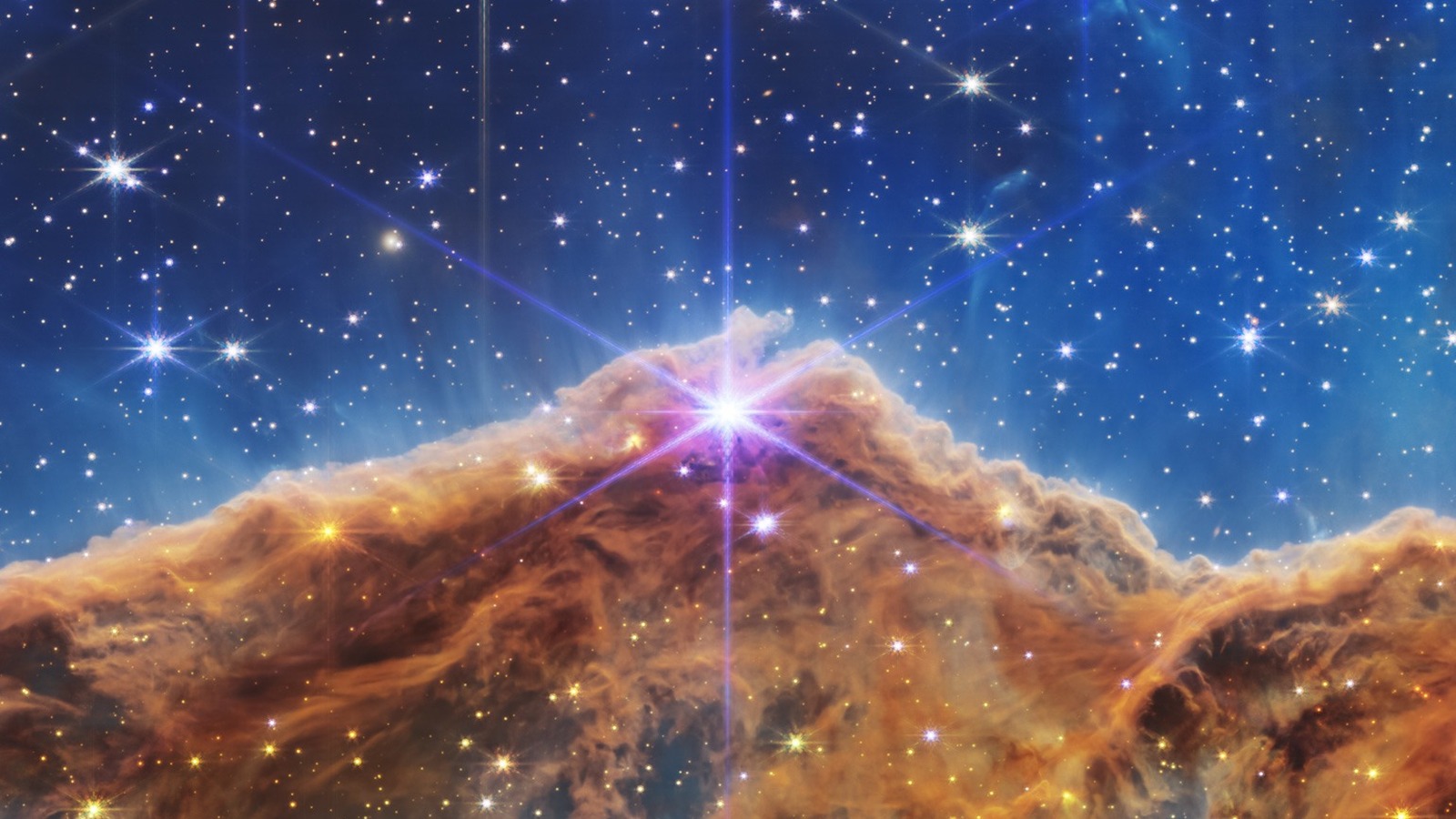Here Are The First Images From The James Webb Space Telescope

Another image shows Carina Nebula, like a range of ghostly mountains made of dragon’s breath. The warm colors are actually the edges of a star-forming region called NGC 3324. The peaks of this celestial gas cavity are estimated to be about seven light-years high. This is several times the length of our own solar system.
NASA also revealed its WASP-96b spectrum data that isn’t so much a beautiful photo of a far away planet as it’s a graph full of data recorded from one such distant planet. What’s cool about this is it shows that the new hardware is capable of more than just snapping detailed pictures — it can also take detailed environmental readings of planets outside our own solar system, right down to picking up evidence of haze and clouds.
Put a ring on it! ????
Compare views of the Southern Ring nebula and its pair of stars by Webb’s NIRCam (L) & MIRI (R) instruments. The dimmer, dying star is expelling gas and dust that Webb sees through in unprecedented detail: https://t.co/tlougFWg8B #UnfoldTheUniverse pic.twitter.com/yOMMmQcAfA
— NASA Webb Telescope (@NASAWebb) July 12, 2022
The imagery of the Southern Ring Nebula presented by the James Webb Space Telescope not only shows the dying star in greater detail but also revealed a second dying star that hadn’t been seen before. While Stephan’s Quintet provides a cool visual of multiple galaxies interacting with each other and setting off new star formations.
The James Webb Space Telescope was launched in December of 2021, and it’s already delivered images and data that prove the worthiness of the project, right from the get-go. Even the test images have been beautiful and engaging.
For all the latest Games News Click Here
For the latest news and updates, follow us on Google News.
